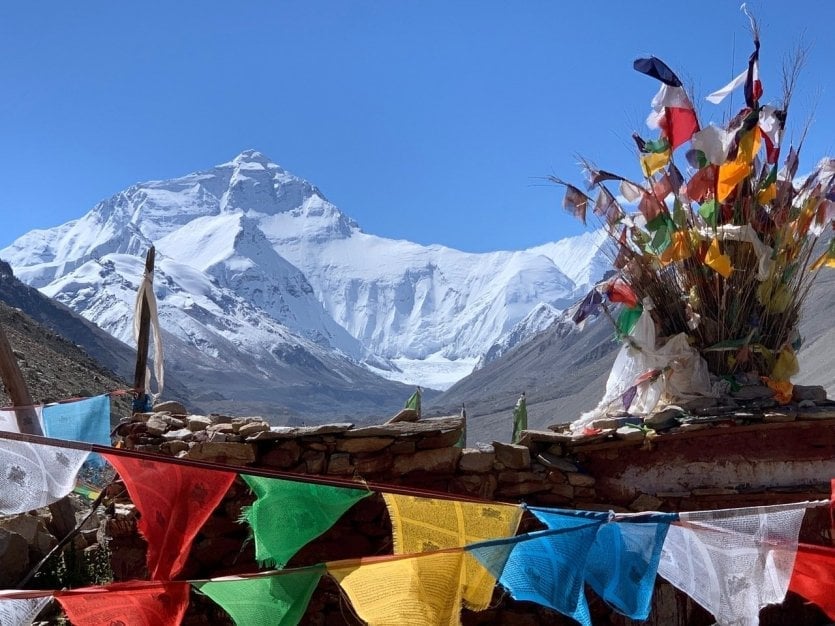
The Himalayan range is the favourite terrain for hikers looking for thrills and immersion in breathtakingly beautiful landscapes. When trekking in Nepal, travellers are always surprised, from the Kathmandu valley to the peaks of Everest and through traditional villages where the locals are happy to welcome walkers for a warm break. Base Camp Trek is a French-speaking agency that offers a large number of varied and unique treks that take hikers off the beaten track, under the guidance of local guides who are available, experienced and committed to making a trek in the Himalayas a stay from which no one returns unscathed
Splendours of the Gokyo Lakes and breathtaking view of Everest

Gaining a view of Everest is the goal of many hikers who set out to conquer the Himalayas. Before arriving at this incredible moment that marks the spirits forever, we enjoy a trek between Gokyo and Kala Pattar where we alternate moments in authentic villages and monasteries perched between the peaks with moments of communion with a striking nature, like nowhere else. At the start of Lukla, the stupas punctuate the path and one can admire the beautiful stones engraved with sacred Buddhist texts, the mani. Arriving at Namche Bazar, we take a break in this splendid village which is located at an altitude of 3,440 metres and which takes the form of a natural amphitheatre. Then nature takes over again, with the Gokyo lakes. How not to marvel at the emerald colour of the water bodies, surrounded by glaciers and the snowy heights of Cho Oyu. Of course, there are other breaks in restful villages and monasteries, in Khumjung and Thengboche, to meet the sherpas, people of the Roof of the World. Then comes the "grail" of the stay, the Kala Pattar. It is here, at 5,600 metres above sea level, that you can enjoy the most beautiful viewpoint in the massif, with a panoramic view of the mythical Everest and its neighbouring peaks.
Between Annapurna and Dhaulagiri, a trek to meet the villages
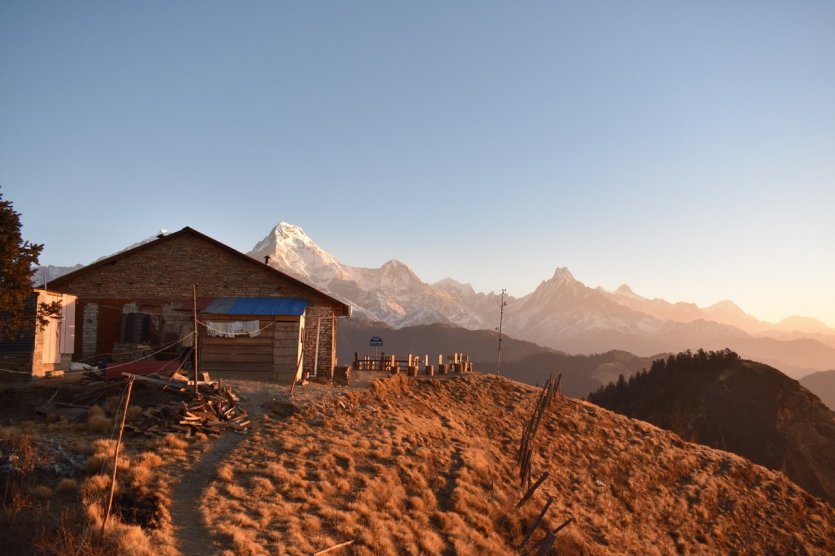
There are different ways to enjoy a mountain trek, and the themes proposed are varied. For travellers who wish to enjoy the splendours of nature, but also want to take a break in high mountain villages and go directly to meet the people, a village trek between Annapurna and Dhaulagiri in Nepal is the perfect option. During this original walk, one crosses the Thulo Kharka clearing, which is home to yaks, then rhododendron forests, bamboo groves and the rice terraces of the Madi Khola valley. We also take time to relax on the shores of Lake Phewa, the second largest lake in Nepal. During the walk, one also never loses sight of the peaks of Annapurna and Dhaulagiri, the seventh highest peak in the world. Between hikes among these natural wonders, we stop in the villages, Danda Kateri, Kighang or Ghandruk and its dry stone houses. These stops with nights in community lodges are an opportunity to meet the population, to exchange around a meal, to take an interest in people's daily life and also to be an actor in the improvement of living conditions in the villages of the Magdi region
The remote valleys around Manaslu
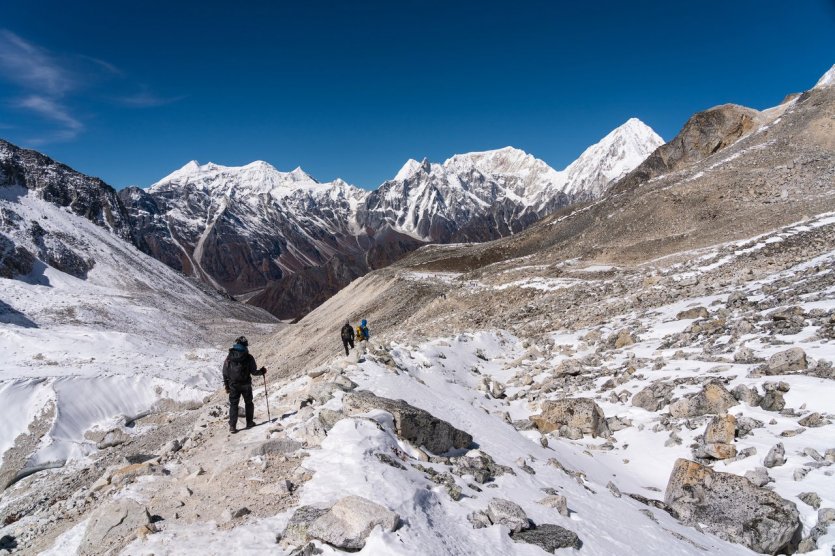
You have to imagine a trek that is also off the beaten track. After a day strolling through the alleys of old Kathmandu, we start a hike much less travelled by walkers from all over the world, and enjoy a more intimate atmosphere. There is no lack of splendour when you set off on a grand tour of the Manaslu, with steps in gorges, along rivers and through forests. How can one not feel spellbound by the views of the snow-capped peaks of Ganseh Himal, Himal Buddha and Manaslu himself. We let ourselves be surprised by the clear waters of Birendra Lake before entering the glacial valley that leads to the foot of the Larkya Glacier. This trek is also the opportunity to pass through typical Nepalese villages and to meet the Tibetan Manangis and Gurung, ethnic Nepalese families who are keen to pass on the art of living in the high mountains and to share their traditions.
Discover the arid lands of Mustang
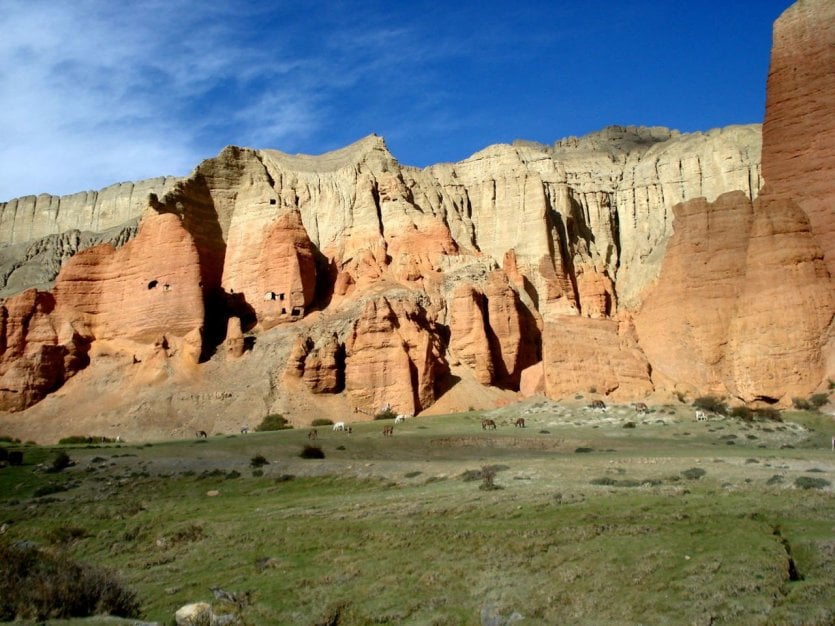
In the north of Nepal, a trek in Mustang allows you to immerse yourself in an enclave of Tibetan Buddhist culture. You will discover grandiose landscapes, troglodyte sites, monasteries clinging to rocky spurs, but also medieval fortresses. Mustang is an arid and mineral land and a trek in this valley offers a striking contrast to the snowy landscape treks. Whether it is the village of Geling, Ghemi or Samdo, one always takes pleasure in stopping in these small villages surrounded by a resplendent nature. The stay also includes a stop in Lomathang, a splendid little capital at the end of the world with winding alleys and also home to historic monasteries. The Vishnu temple, the Tashi Kabum cave are other sights that you should not miss. On the nature side, we cross the Kali Gandaki Gorge and climb passes located between 3,000 and 4,000 meters above sea level. The Nyi La Pass, the Loday Pass, offers drier and sunnier walks, with the snowy fortresses of Annapurna and Dhaulagiri in the distance. An ideal composition for hiking
World's Highest in Kanchenjunga Region
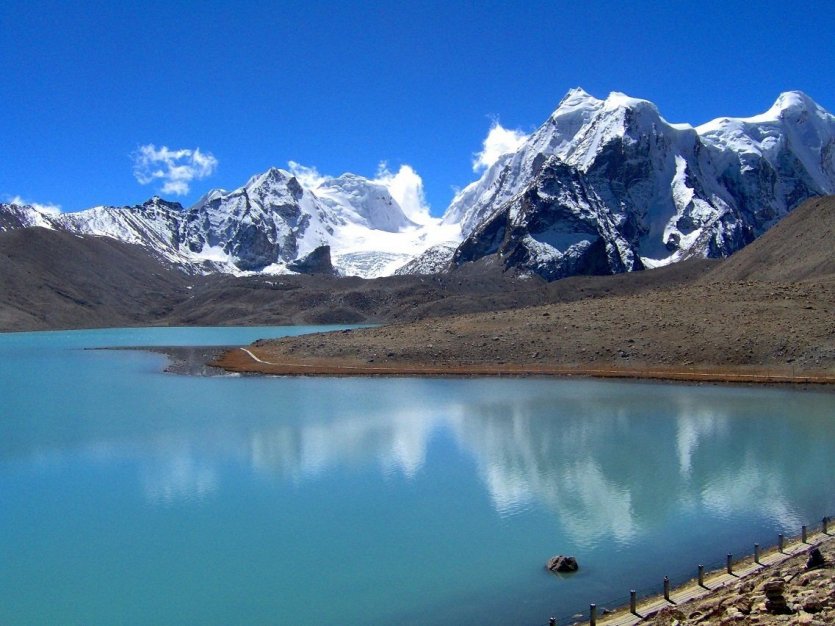
The trek to the Kanchenjunga base camp allows travellers to get in touch with Nepal's least frequented high mountain scenery. We walk along rivers and cross them on small wooden bridges, before plunging into forests of rhododendrons, junipers or bamboos. After passing by the dry lake of Lhonak, a trek in the Kanchenjunga region is also an opportunity to conquer the sometimes difficult passes, since they are located at more than 4,000 meters above sea level, such as Sirion La and Mirgin La. But how magnificent the panoramas offered are! Especially the one you can enjoy along the moraine glacier of Kanchenjunga. The view of Chang Himal, KirantChuli or Kambachem are moments of great communion with the most beautiful peaks of the Himalayas. And then there are the encounters, with the Tibetans, the Sherpas or the Limbuses, which are moments of rich exchanges that take place in small isolated villages, sometimes composed of less than 10 houses, as is the case in Mitlung and Amjilosa


